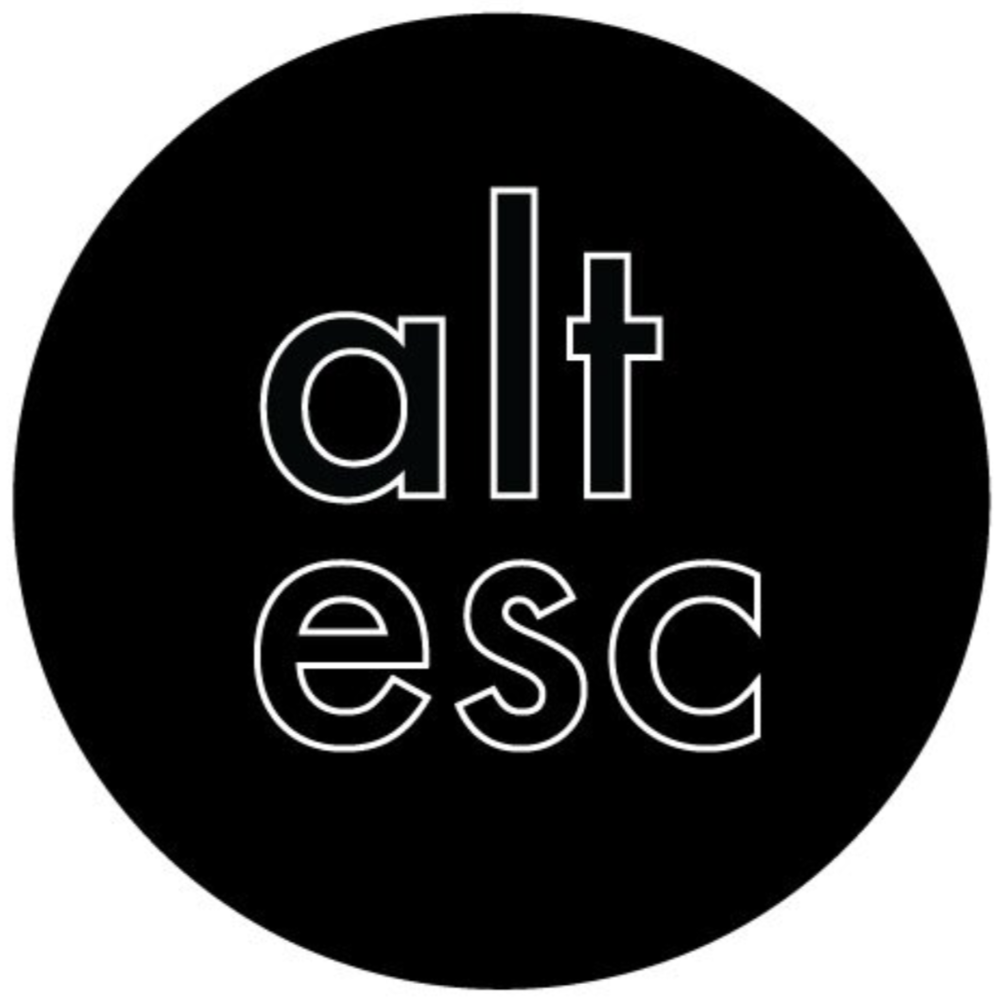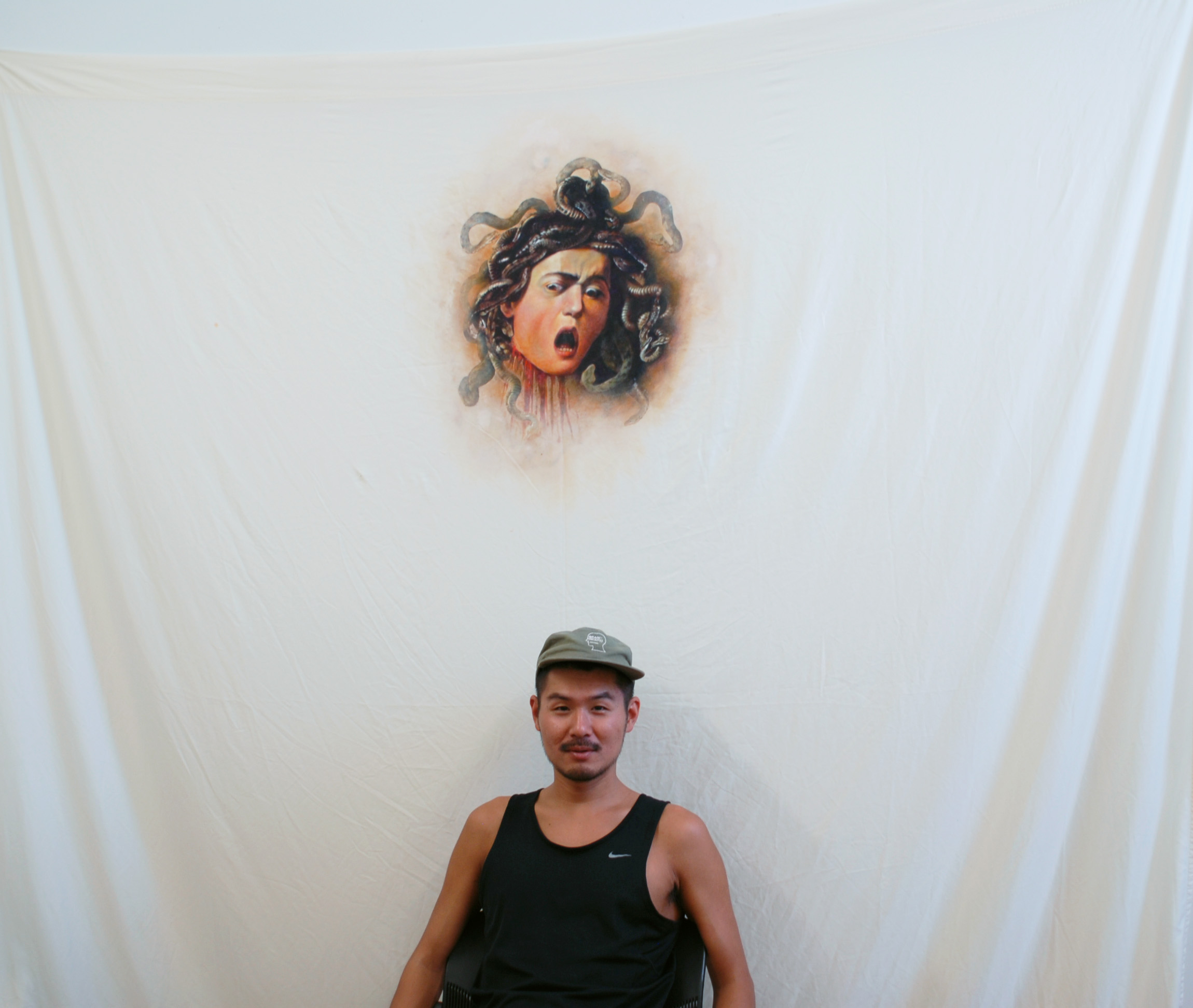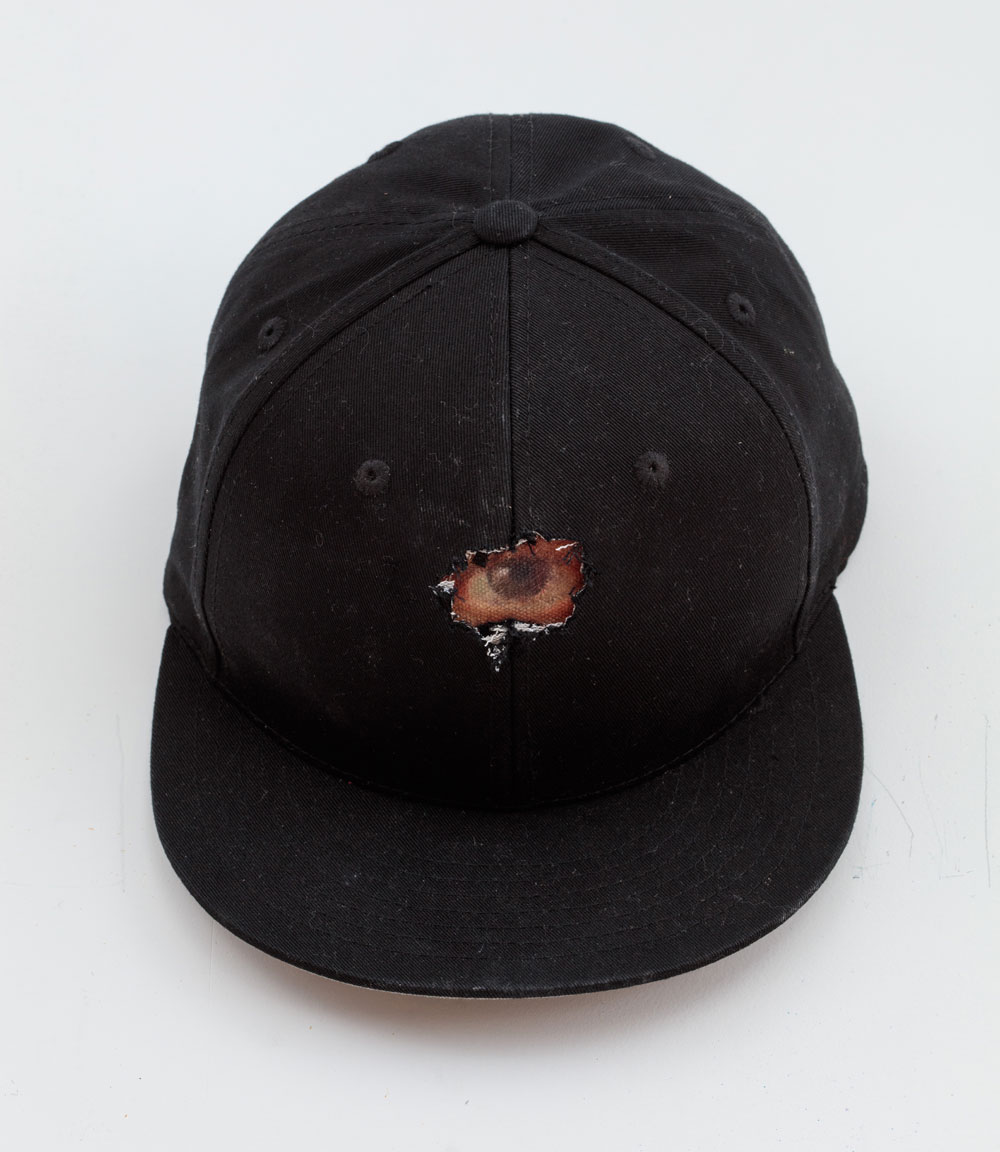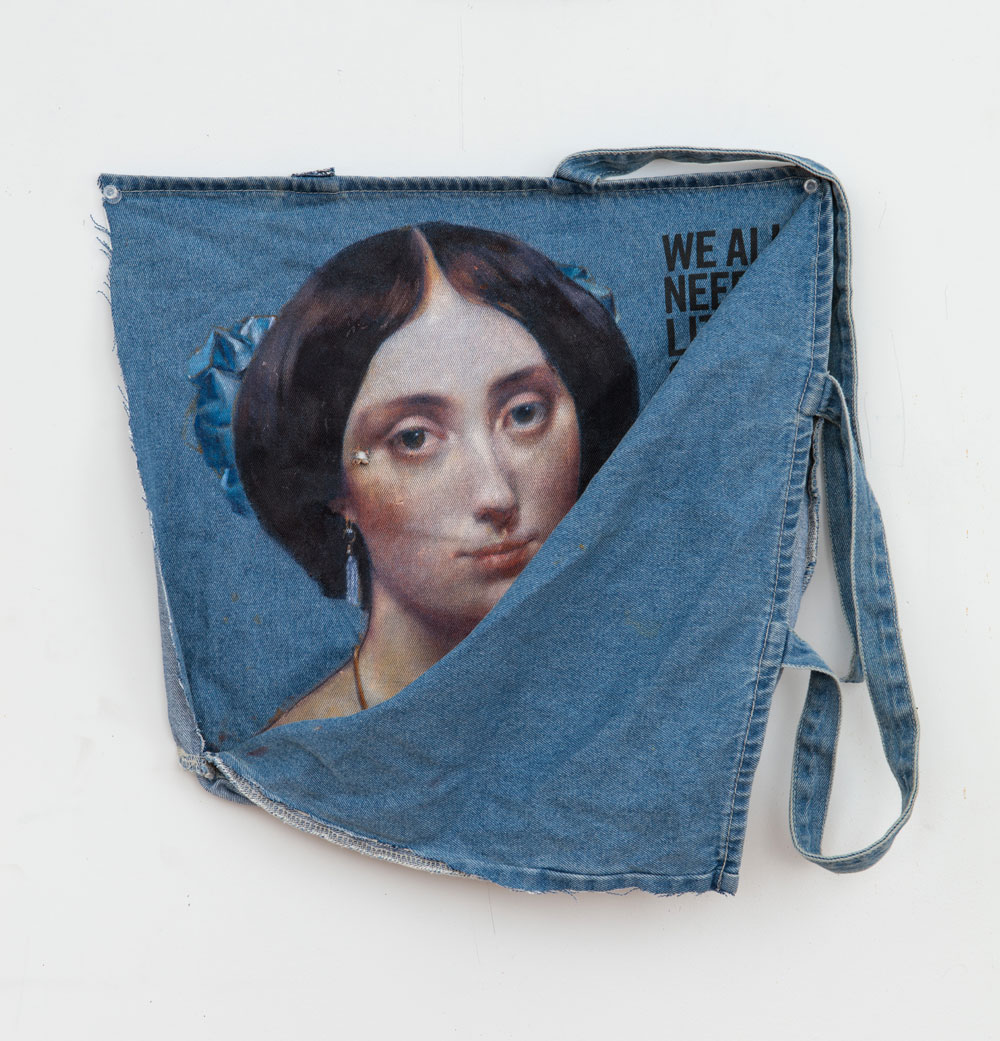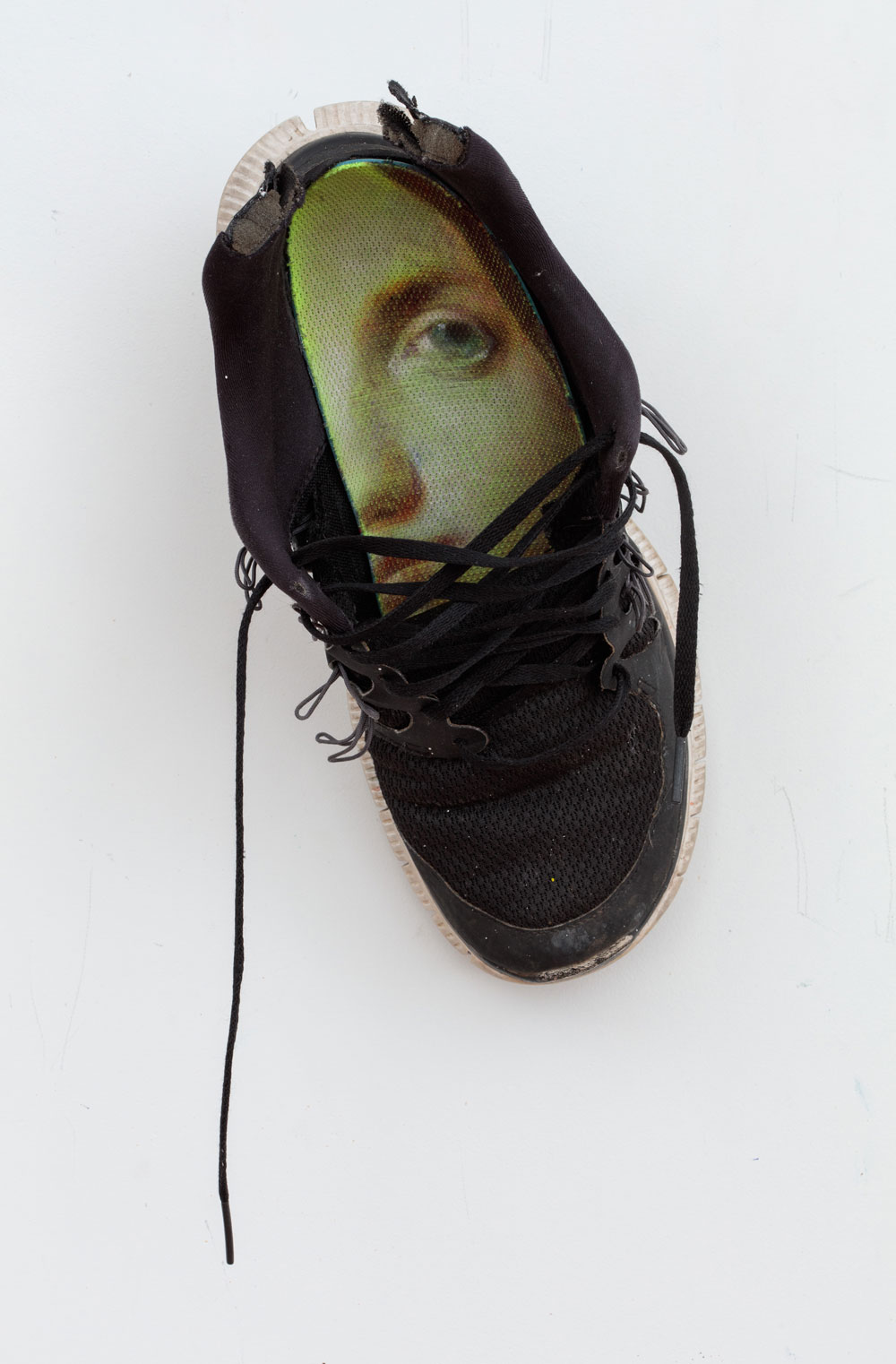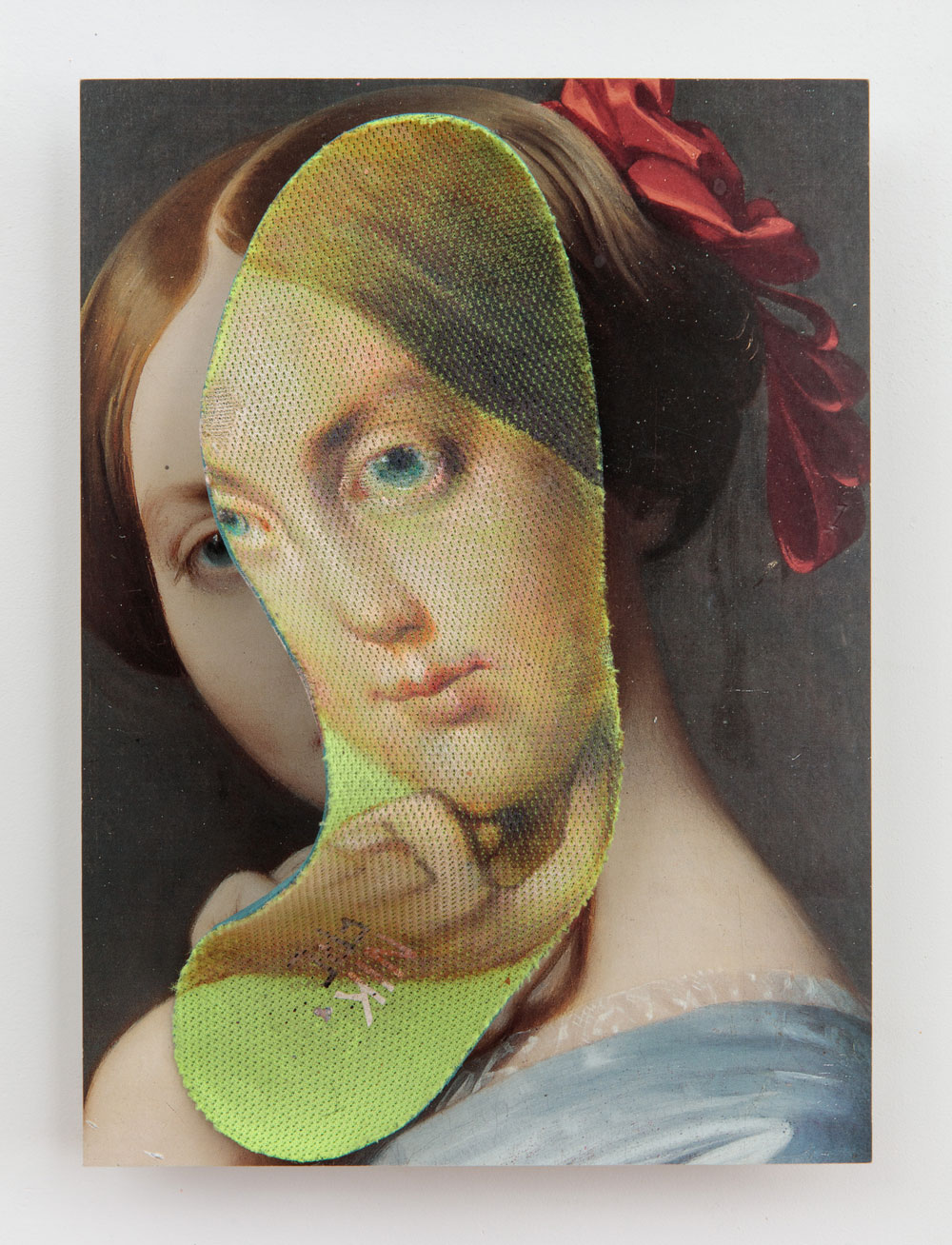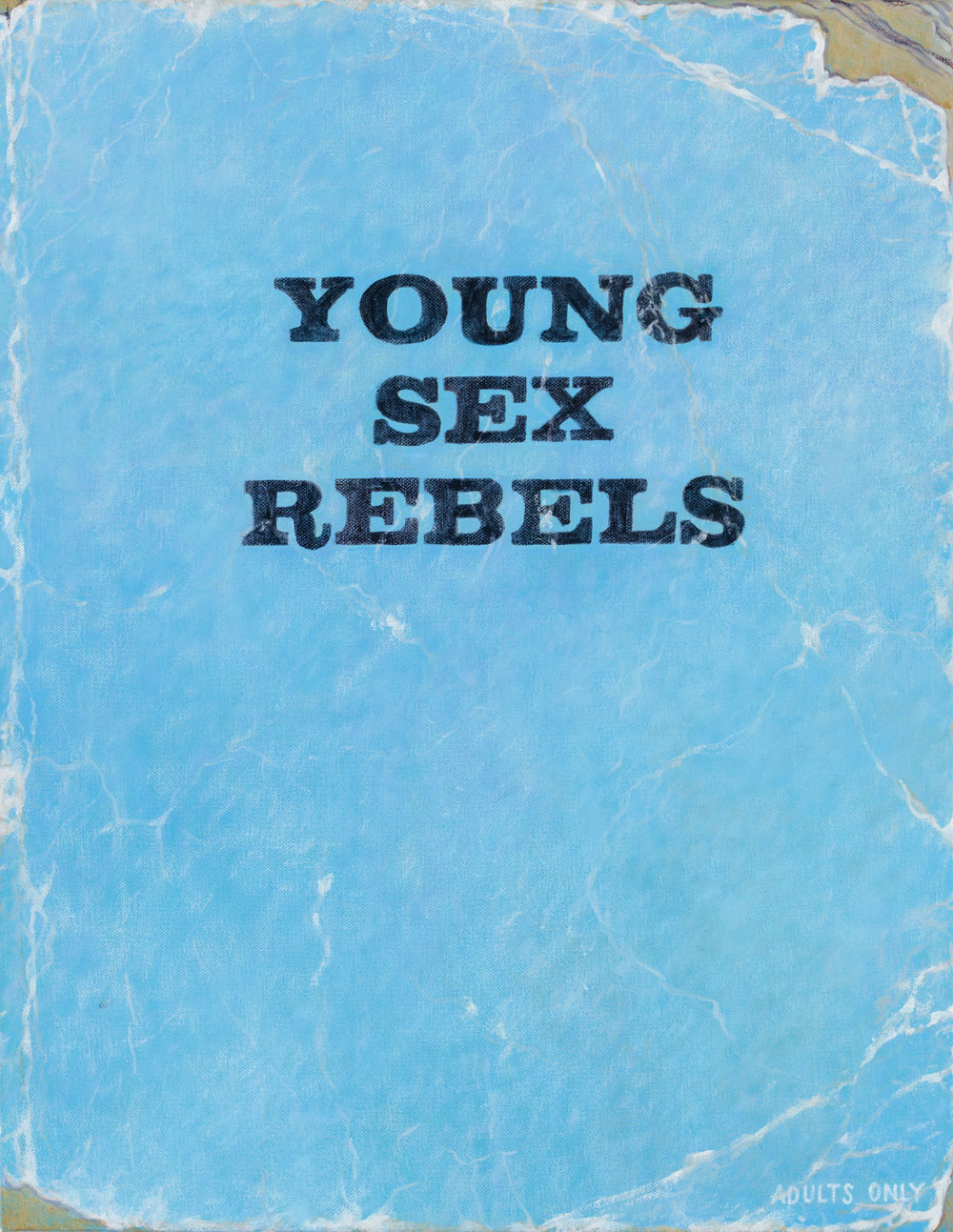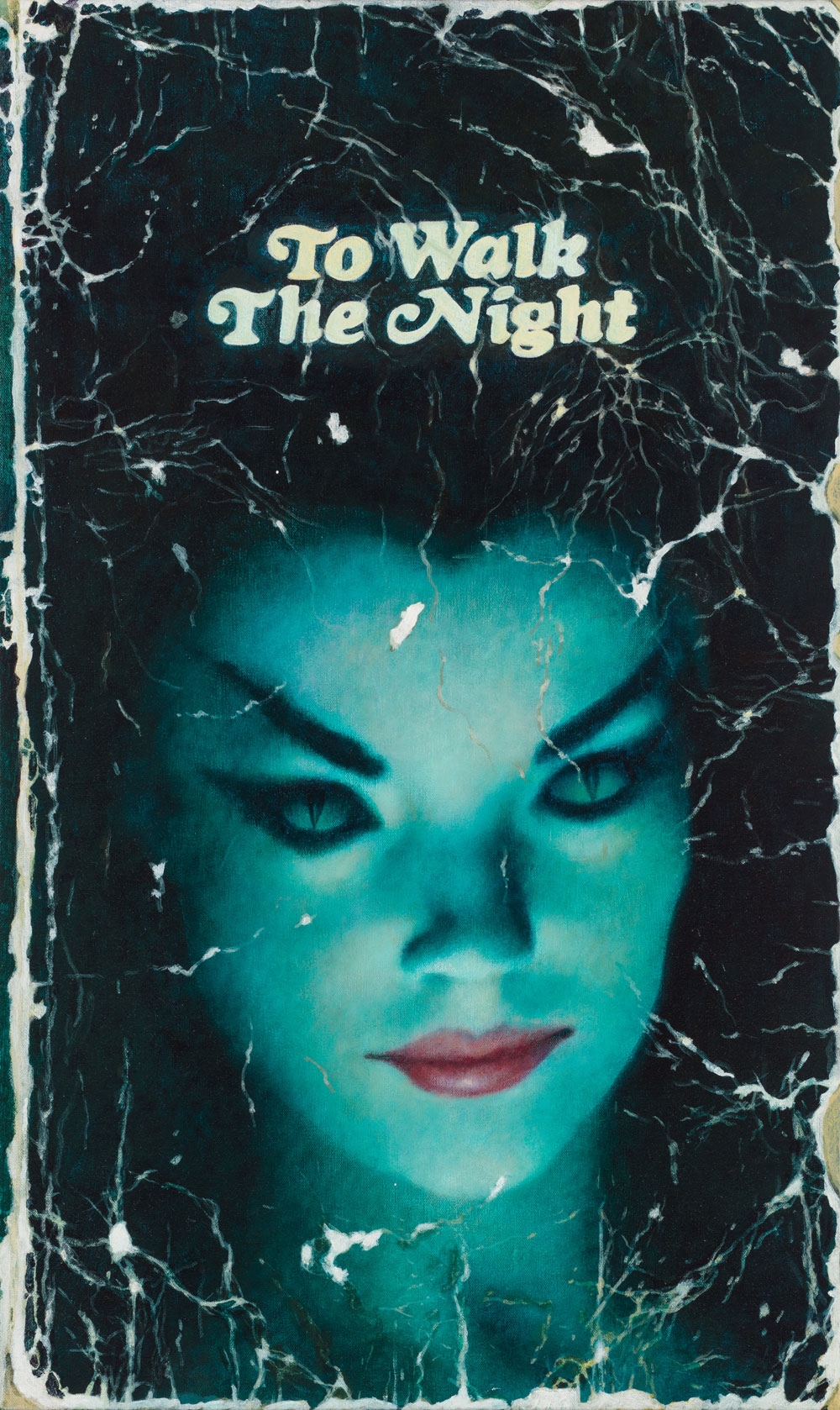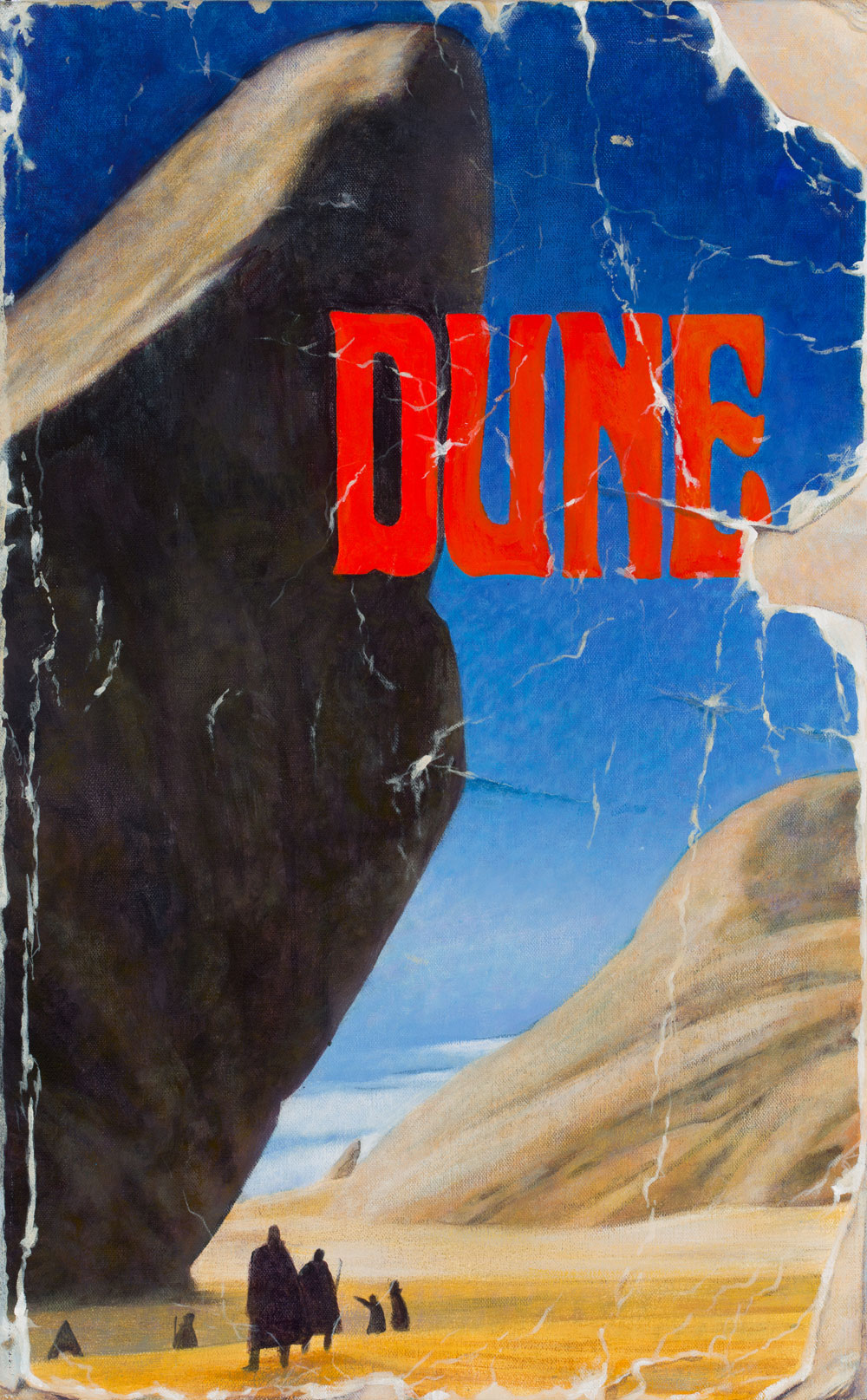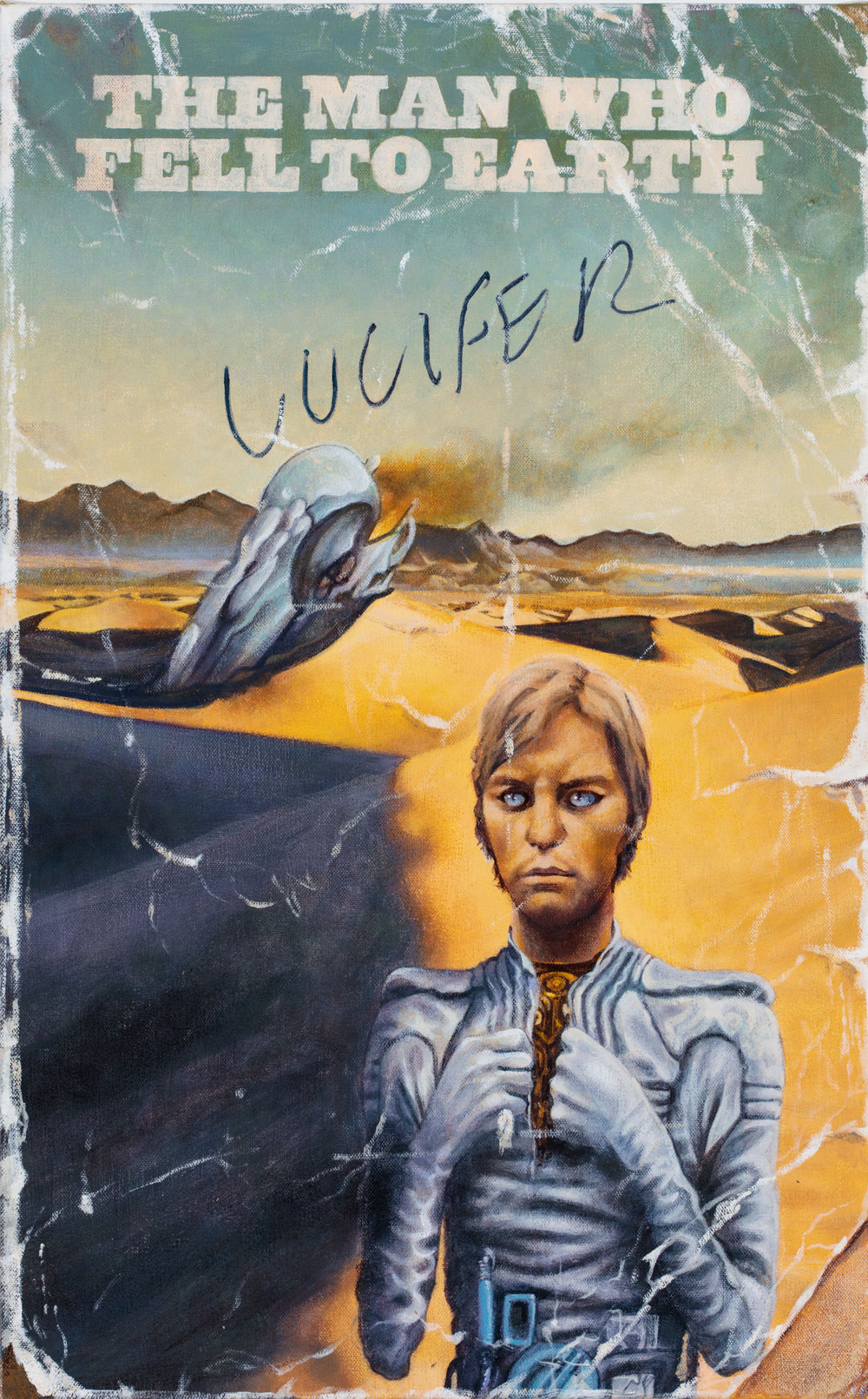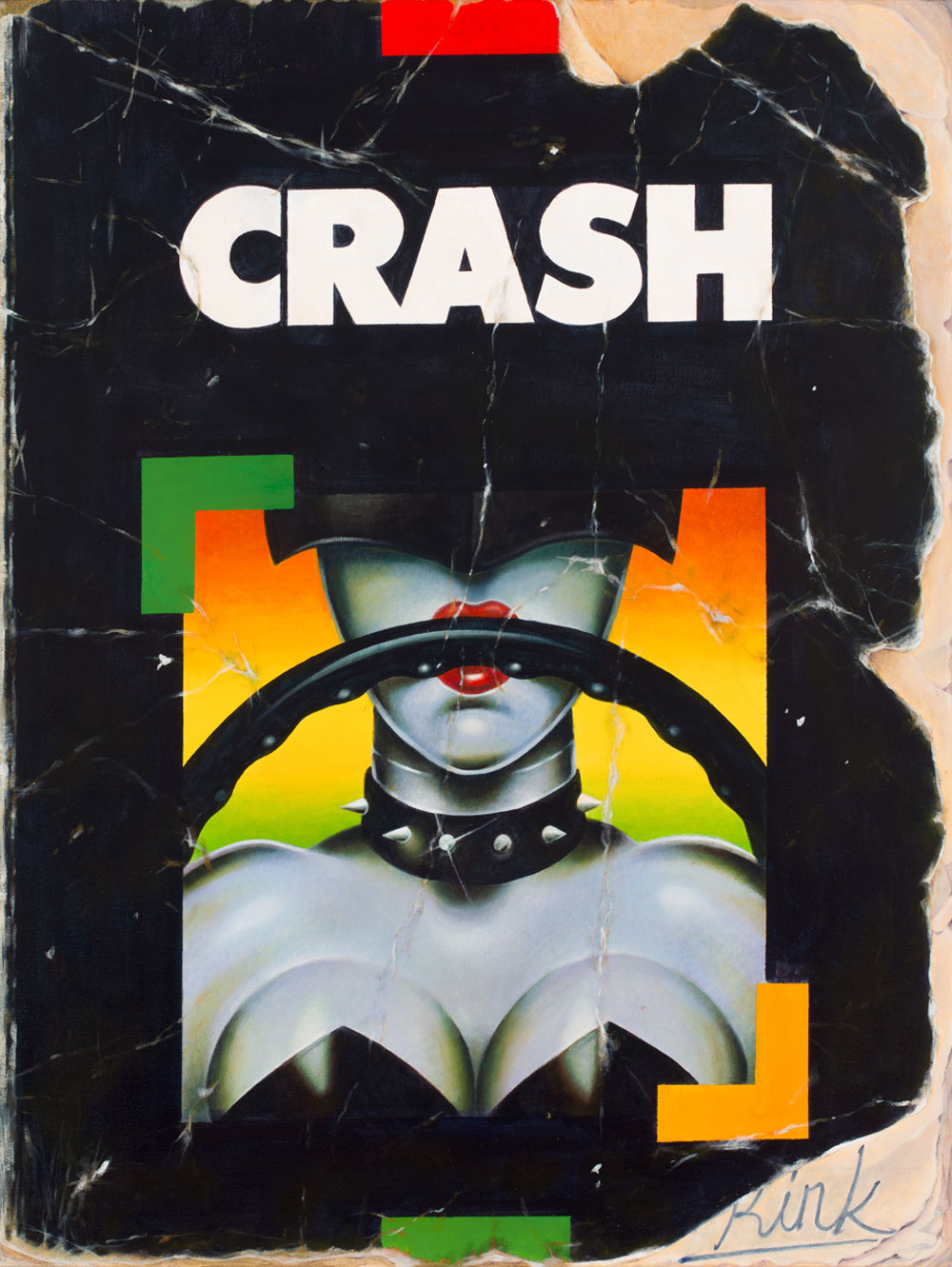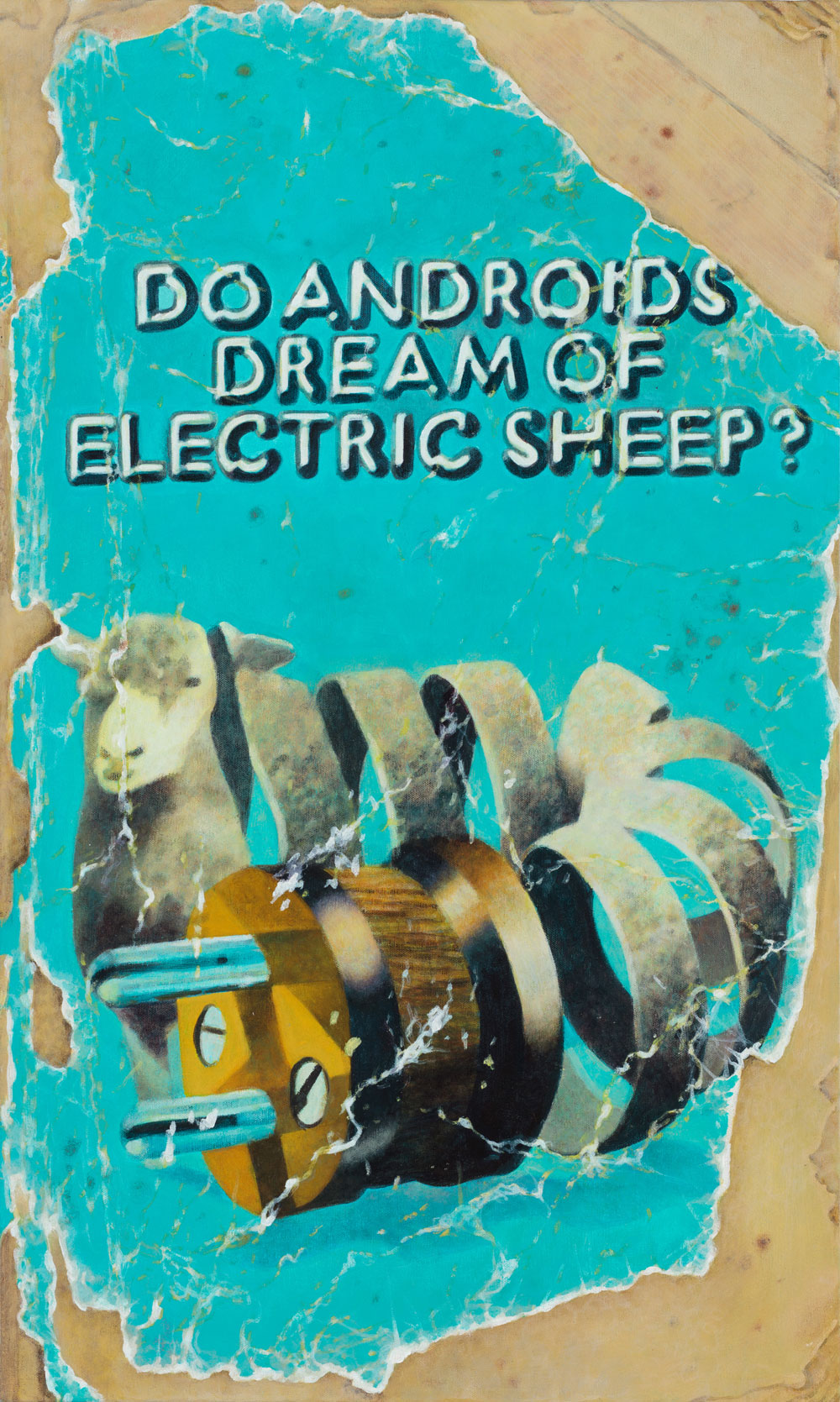CHRIS OH
Chris Oh is a painter living in Brooklyn. He juxtaposes photorealistic renditions of Old Masters on "canvases" made of contemporary clothing, and recreates worn sci-fi book covers. We met up with him in his studio in Bushwick to talk about Ingres and sci-fi.
How did you get to New York from Portland?
I came to New York in 2000 to attend the School of Visual Arts. I started painting in high school and was a graphic design major my foundation year of college, but didn’t really think about having an art career until I realized just how much I loved painting. So I switched to the fine art department my second semester and met a lot of really encouraging teachers. After college I went back and forth between what I wanted to do with my life, and then coming into my 30’s I realized that I wanted make art.
How is Portland versus New York?
There is so much competition in New York (which is so much of a larger city) and I think it makes the art stand out here. The art scene in Portland was my first exposure to fine art and it definitely gave me a strong foundation. But I haven’t lived there full time since I came to New York so it’s still somewhat new to me. It seems to have been really changing in recent years, especially with the rate that the city is growing.
What sparked your interest to go towards the creative direction?
I’ve been drawing my entire life and my parents have always been encouraging. I’ve always had a knack for drawing realistically. Praise is very encouraging too, but can be dangerous… it can make you stagnant. I’ve definitely gone through phases in my art - it had to be something other than photo realism or it had to be more challenging and I’ve learned to challenge myself. Not to sound too hippy but you have to be in tune with who you are. Know when to push yourself and know where your strengths lie. Making art has been a way of finding myself and accepting me for who I am.
How did you get to painting on everything but canvas?
I got sick of painting on canvas.. sick of stretching canvas, sick of squares. So I was kind of in this desperate spot. I’m into different types of ephemera and had these old museum reproductions that were stashed in my room. The old masters have been a fascination of mine since I was young and I had been wanting to use this imagery in my work, specifically DaVinci’s “The Head of The Virgin in Three-Quarter View Facing Right”, it’s one of my favorite drawings. I had been wracking my brain for weeks trying to figure out how to reinterpret the print in a way that was interesting, something that would stand out and not look just like a poster. My first idea was to repaint it in a similar manner to the books.. change the scale, add some wear, but that didn’t seem interesting enough. That’s when I started to use these rags and bits of clothing I would find around my apartment. It seems like a contradiction to depict this revered work of art on top of rags, this material that looks like modern clothing. I like the idea of taking every day objects that are seemingly not worth very much and transforming how they are perceived, I find that interesting. I have to say I was a little arrogant thinking that I could paint a Leonardo Da Vinci and it didn’t really come out how I wanted to. I don’t know how the paint will react to a material, that’s the exciting part.
Why acrylic only?
It’s non-toxic, which is great. It dries very fast and I’m into producing work as much work as possible. My time is very limited and I’m addicted to progress. And I like to keep my process as simple as possible so financial constraints don’t bog me down. Say I lose my studio, I can still paint anywhere. I won’t be hindered by my process which is very important to me.
What is the fascination with form and old masters?
As a photo realist, my biggest problem has been figuring out what to paint. Before this fabric series I was doing a lot of book covers, like the really cheap paperbacks that you find on the street or in thrift stores. Something about the worn quality as a history of the object really attracts me. That led to these old museum reproductions. That was the other side of the spectrum from appropriating science fiction illustrations.
Since the pinnacle of hyperrealism has been achieved, do you feel like you are paying homage to these old masters or trying to reinvent something?
I would say both. I love the way old art looks and feel a deep emotional connection to it. At the end of the day I’m trying to utilize my skill which is not the most innovative, I’ll admit that. I feel like the greatest innovations in art these days comes from sculpture and new media. But it’s what I enjoy doing, and it’s important for me to have fun making art. So I work within my limitations to make something I feel is interesting, which is rare… I’m constantly pushing myself.
Who are you favorite masters and artist you are looking at?
Da Vinci and Ingres are quite prevalent in a lot of these paintings, Caravaggio. I’ve been looking at a lot of Northern Renaissance and Byzantine painting lately. Picasso and Matisse have been lifelong inspirations, but I doubt I’ll touch them. Duchamp… Richard Tuttle, Ken Price, Marilyn Minter, and David Hammonds have been big influences lately… Mary Heilmann, she has a seemingly effortless way of creating a breathtaking piece.
Your latest work includes a Medusa. Why that subject matter?
A lot of these pieces allude ancient myths. I choose to reference them because of the archetypes that are prevalent within those stories, characters that recur throughout many cultures. There’s a reason for that and it’s because people really identify with these traits which are interpretations of the human condition. I was always terrified of Medusa when I was young, the thought of this near invincible being that could turn you to stone, this monster snake lady. As I got older I realized how powerful of a female figure she really is. I love Carravagio’s interpretation of the Medusa head, it’s so intense and I wanted to see if I could paint a Carravagio. The big challenge was how to do it in a way that wasn’t just a copy. I decided to give her back a body, and I wanted it to be as powerful as I had always imagined. I see a form emerge from the folds of this towering bed sheet like a ghost of her body. So this is my homage to Medusa.
Would you delve into other mediums?
I’ve always been into installation, to be able to change the perception of a room. In a way I see these pieces as elements of an installation. It’s so fun to rearrange them in the studio, see how they to play off each other in different ways. And because I work in many different series the results can be strange. Part of my process is making as much work as possible and bringing these seemingly disparate references together, having a thread emerge. I mostly see myself as an editor. The painting part is quite mechanical, it’s a means of production.
Is your work meditative?
I’d say so... I definitely fall into a state of deep focus where the painting is all I think about. I forget to eat and I drink coffee all day. If my contacts didn’t dry out I’d work all night... sometimes I do.
What else are you working on now?
I am doing another book cover right now. I like to go back and forth between different series, it keeps me from getting bored. A big part of the book cover series is about finding the books and deciding which ones to paint. I like the challenge of working within parameters. To essentially make something as original as I can while changing as little as possible. So I take away much of the publishing information to intensify the relationship between the cover image and title, and to distance the painting from looking like a book. I add the wear and tear which brings it back into a book’s nature. It’s a fine line what the painting can be read as, and I like that subtle confusion. That kind of damage is so specific to being a handheld object that it causes another contradiction once the scale is changed from the original cover. Books are cherished and definitely used and abused, and the wear is a book’s history of being an individual object. In the past I had always wanted to avoid nostalgia but I’ve realized over the past couple of months that it’s is one of the strongest emotions I’m trying to go for.
Do you like sci-fi? I see some Isaac Asimov covers.
Yes they were the first book covers I started painting. These covers are so insanely imaginative and surreal, it’s really impressive. Sci-fi has a very forward thinking style of writing that continues to be relevant half a century after it was written. I think it’s still quite underrated.
What’s your favorite sci-fi book though?
Dune.
Where do you search for your books?
It’s a secret!
